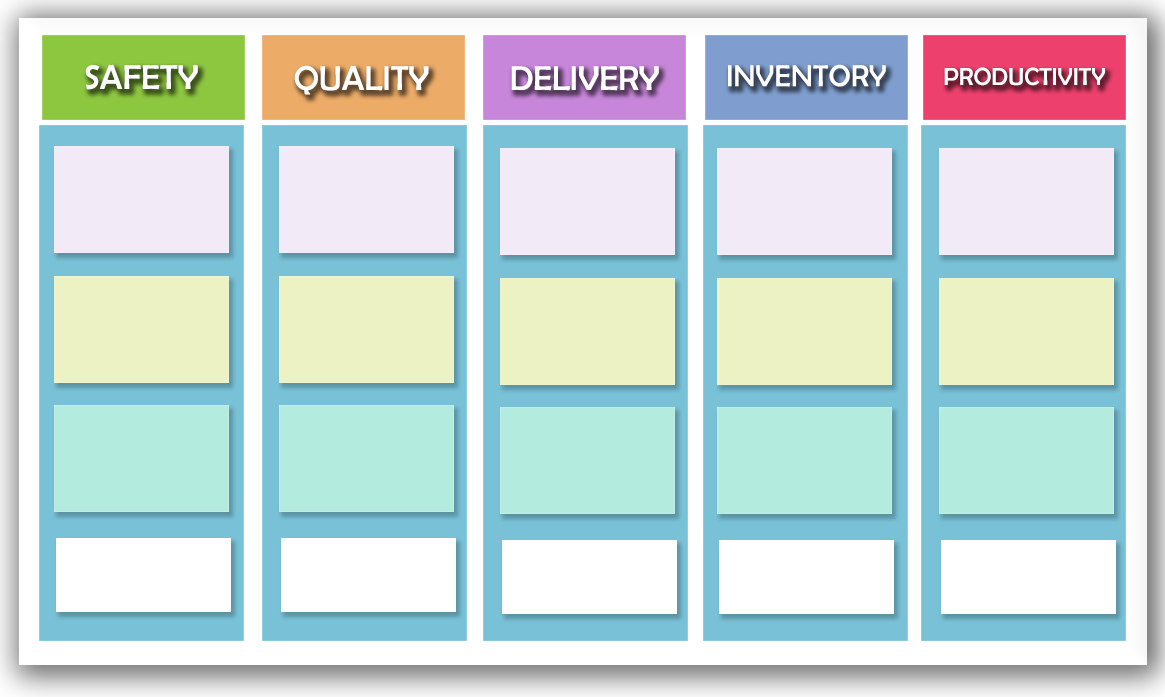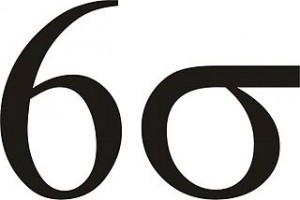Running a business or managing a team is a challenging endeavor. Fortunately, there are a great number of tools that people can use to understand the various problems and statuses within the workplace.
One tool that can be used is the Gemba Board.
The Gemba Board is taken from the Japanese philosophy of “Gemba Kaizen”. Gemba is literally translated as the area where value is found and made. It can be a factory floor or the place where sales takes place.
Kaizen on the other hand is translated to improving oneself or organization.
However, if the term is taken together, it takes on a whole new meaning. It speaks to the continuous improvement of business processes, standardizing processes, and promoting discipline. Furthermore, it believes in the systems in place to solve certain problems.
The practitioners of Gemba Kaizen depend on the individual contributions of people to improve the system. They do this by analyzing and improving the activities on the floor area of the business.
The Gemba Board comes into play when trying to understand what is happening in your work environment, and striving for improvement.
The Gemba Walk
The Gemba Board is a visual tool that allows people to keep track of the status of certain elements in a workplace. The elements placed on the board wholly depend on the nature of the business and what users want to track.
The first step is to carve out time in a work day and – as the name suggests – take a walk. Now, there is a significant difference between walking around and finger pointing, and going on a Gemba Walk.
Some people in management often think that walking around managing people through what they see is the way to go.
The Gemba Walk is a much different philosophy. It is not the time to point out faults or to push people to follow policies. This can be done though if it is a serious policy infraction and people’s safety is in question. Doing this will create friction with the employees and they may be hesitant in helping out.
The key difference is that the Gemba Walk’s goal is to understand the business and what is going on around and within it. Management can walk around and see the present problems, what works, what doesn’t work, and what can be done to improve the business.
In the process of understanding, question employees and find out why they are succeeding or where their pain points are.
The whole idea is to learn as much as you can about what is going on and improve upon it.
Take note that there is no standard time for when to take the walk. People can do it when a business is starting up. People can also do it when changes are being applied. There is nothing wrong with evaluating things that are in place or in the midst of improvement.
Whatever needs to be improved, it can either be brainstormed before the walk, or can be found during the walk.
The Gemba Board
A typical Gemba Board consists of several columns and rows. Each column has one specific piece of information that is being tracked or people want to improve. Examples of this can be:
- Safety
- Quality
- Workflow
- Productivity
- Maintenance
- Delivery
- Inventory
- Morale
These are only examples of what can be tracked. Anything can be tracked and improved really. As said previously, these areas can be brainstormed prior to the Gemba Walk, or can be seen during.
If this is the first time you are hearing about the Gemba Board, a template may be useful.

People must put in a good amount of information in the Gemba Board. One example is safety. For safety, it would be good to put the number of accidents, when they occurred, and where they occurred.
For productivity, it would be best to put together the output of certain teams or people and where the problem areas are. All of this information will allow for the Gemba Board to be more effective.
Let’s check out a few tips for preparing and using the Gemba Board.
Visible and Facilitates Communication
For all intents and purposes, the Gemba Board is a communication tool. It should be placed in an area where it can be seen by most if not everyone.
This is a great tool to get information to the front-line employees. They can understand what the focus of the improvements are, and what their goals are moving forward.
It can also act as a reference point for various projects. It serves as a touchpoint so that everyone is one the same page.
Finally, doing this will help increase transparency between management and the employees.
Now these boards are not just for the benefit of front-line employees though. It can also be used between people in management. It can serve as a tracking tool for company-wide projects that affect multiple factors.
Accurate and Real-time Information
Since the board will serve as a touchpoint moving forward, it is important that all the information is accurate and in real-time.
The idea is that employees don’t look at the Gemba Board just once. They look at it on a daily basis if need be in order to align expectations and understand what needs to happen moving forward.
The board should help to communicate the progress of improvements. This is why it is important to have real-time information.
While it is good to have as much information as possible, it is also a good practice to keep things simple. Employees should be able to look at the board and understand the different data that is placed there.
Share the Board
In most cases, when management prepares something like this, they have a vision for the board. Thus, they will most likely prepare in a way that aligns to their vision.
However, one of the main goals of the board is to allow frontliners and employees to understand the contents. The easy way to do that is to have these people contribute to the board too and be engaged.
One example is a team’s performance. A member of management may have a different way of benchmarking what “good performance” looks like. Employees may have differing opinions as well.
Seek to understand their side and apply it. It will not just make things easier, but engage the employees as well.
It may turn out that employees understand good performance as the number of tasks completed in a day. A good way of putting this on the board is to place a set of boxes that they can check or shade out. This could denote how many jobs they have completed.

Avoid Making the Board a Wallpaper
Have you ever had a report or a bunch of charts put up around the office, and no one even gives the time of day?
This is a common occurrence. While the information may be vital, sometimes these charts or graphs end up just like wallpaper.
Instead of making it a wallpaper, it is best to make the Gemba Board a topic of conversation. An easy way to do this is to integrate the Gemba Board in daily meetings. That way, people can analyze and talk about the information on the boards together.
Don’t Aim for Beauty, Aim for What Works
One big mistake that is done when preparing reports like this is the desire to make it look beautiful. Again, this goes back to the initial “vision” of the person who creates it.
Instead of making it beautiful, just go for what works. One tip is to use reports that are filled out by hand. This way, the team is engaged and filling up the reports themselves.
Teams can use multiple colors of pens to denote different things. A blue pen can denote that the team is on-target, while a red pen can mean that they are off-target.
This also speaks to standardization. Standardization in terms of appearance can more often than not cause more problems.
Instead, the board of each team can be made to follow certain themes or points. These can be requirements. They can include agendas, meeting attendance, and more.
Let each team take ownership of their own board. It may come out differently, but if the themes and points are in place, the information gleaned would be the same.
We hope the information in this article is helpful. Try out the Gemba Board and see if it works out in your workplace.


